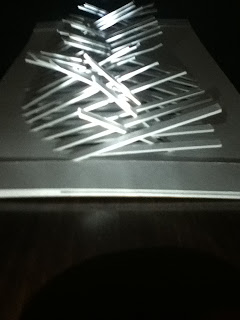It is my intention to create a pattern looking back to my Project 1 study of surfaces that appear to wear and disintegrate based on the number of points and divisions that I allocate the model.
Sunday, May 13, 2012
...on Generative Components
It is my intention to create a pattern looking back to my Project 1 study of surfaces that appear to wear and disintegrate based on the number of points and divisions that I allocate the model.
...on Recombinant sequence models
So here is the final model. The two halves have been woven together. You can now see how the different curves that made up the initial cuts, now influence the shape and curves seen in the model. Each piece can then be moved and manipulated to create a different curve and relationship, similar to that seen in the animation and previous model. In this version of the model the halves are fixed in place. However the construction of the model allows for the halves to be removed and interchanged to create different conditions and relationships.
Playing with the model pieces and lighting gave many different interpretations to the layers that made up the overall model.
Playing with the model pieces and lighting gave many different interpretations to the layers that made up the overall model.
...on Project 2 Prototypes
In attempting to create a physical model based on the previous maya models, I found that to create the overlap and weaving as seen in the renderings, the physical model itself would have to be woven. The images here show the halves that would be connected. They are both cut from the same sheet of strathmore board, and are inverse to each other. This occurs based on the curves that define the shape.
Once cut, every other strip is raised to create the opening needed to begin weaving the model.
Once cut, every other strip is raised to create the opening needed to begin weaving the model.
Subscribe to:
Posts (Atom)








